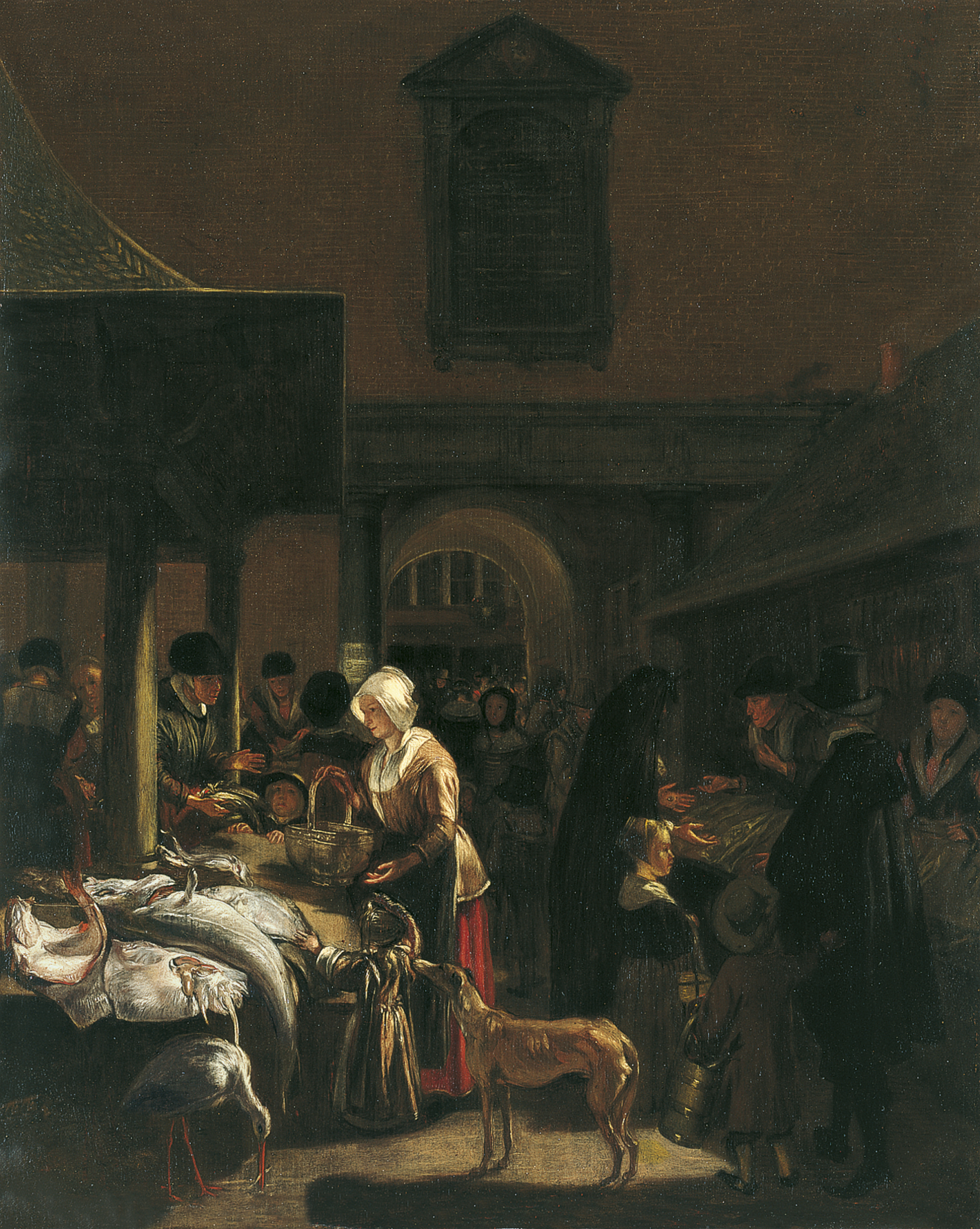 |
The Old Fish Market on the Dam, Amsterdam
Emanuel de Witte, 1650 |
Since I could have time to go to the museum during the semester, I decided to do a virtual tour at El Museo National Thyssen-Bornemisza in Madrid, Spain. One work that related to the theme of Humanism is The Old Fish Market on the Dam, Amsterdam by Emanuel de Witte, created in 1650. In the painting, it looks like a normal setting with people observing and buying fish in the market itself and it's focused on the woman and her children in the foreground and a dog in the middle of the painting. In the background, their people who looked like there about to head in their direction as merchants would have customers near their stands, with the building with the arch allowing 6 going through the building itself. The backstory of this painting is that Witte was that "his market scenes the present example is the earliest and was dated by Manke to around 1650...The artist focused on the light in the first room, which is followed by another that is visible through a semicircular archway. This second area is more dimly lit and includes a large number of figures. The painting has become darker over the course of time, which makes it particularly difficult to read the right-hand side of the composition." Since the reason, it was mentioned was that Wittte would go into depth on his work and he choose the lighting in his artwork that would tell a story or an event is going on that day.
 |
A Vegetable Market
Hendrik Sorgh, 1662 |
How this work is related is from an article called, "Gabriel Metsu's Vegetable Market at Amsterdam: Seventeenth-Century Dutch Market Paintings and Horticulture" by Linda Stone-Ferrier. The article, it discusses the different types of painting taking place in a vegetable market, all made by Dutch artists during the 16-17th Century. How this is related is how it's being based on a theme of market painting in Amsterdam, and since there's wasn't a lot of articles talking about it, this one is the first to pop out as the first result. One thing to mention in this article is, "Interpretation of such sixteenth-century paintings are varied, but often conclude that the painter offers a contrast between corporeal food, as represented in the foreground of the painting, and spiritual food, as symbolized by the biblical events in the background." (434). When looking at this quote, I looked back at Witte's painting and sort of get an understanding since we could see a pile of fish in the foreground as the merchants are selling them to their customers, and fish being part of the biblical symbols in Christianity, it makes sense.
When connecting all together, it sort of match-up from the idea theme of Humanism. Since the painting deals with human events back in the day and the article itself also talks about the idea of markets in a daily setting. With this theme coming to mind, I think about just that, the events where things happening all at once and not just in one sitting. Also, it's related to nowadays farmers markets since it would take place in an outdoor environment, and would realize that it's been happening over the decades. Overall, the connection would be the human interaction and even the symbolism of foods being a religious ideal from research on the article.
Work Cited
Stone-Ferrier, Linda. “Gabriel Metsu’s Vegetable Market at Amsterdam: Seventeenth-Century Dutch Market Paintings and Horticulture.” The Art Bulletin, vol. 71, no. 3, [Taylor & Francis, Ltd., College Art Association], 1989, pp. 428–52, https://doi.org/10.2307/3051137.
Witte, Emanuel de. “The Old Fish Market on the Dam, Amsterdam.” Museo Nacional Thyssen-Bornemisza, https://www.museothyssen.org/en/collection/artists/witte-emanuel/old-fish-market-dam-amsterdam.



Comments
Post a Comment